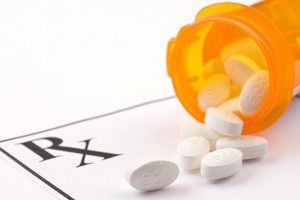How “Death with Dignity” Really Happens

As the Maryland General Assembly continues to debate legislation (HB.399 and SB.311) on physician-assisted suicide, we wanted to revisit a topic that we feel deserves renewed attention: how “death with dignity” really happens. This is crucial for legislators and Maryland residents to understand, as it both translates to the reality of a patient ending his or her life, and presents a new danger for unaccountable prescription drugs. For most, the process is not at all what they expect at first, but upon careful consideration, it’s clear that physician-assisted suicide is anything but a dignified way to die and has a serious risk of external consequences. Here’s the reality of physician-assisted suicide:
1. Once a patient is approved for “death with dignity” by a physician (often not by their regular doctor, but one who is willing to prescribe physician-assisted suicide) they are written a prescription for the lethal drugs. The most common prescription is 9 – 10 grams of Seconal (secobarbital). To reach this dosage, the patient must ingest 90 – 100 capsules in under an hour. The details here are important to understand: Seconal was not created as a suicide drug. It was prescribed regularly by doctors for a variety of approved, on-label uses, but in much smaller doses. Only when a patient ingests 9 – 10 grams or 90 – 100 pills is the drug lethal. Patients are being prescribed an intentional overdose.
2. With the prescription in hand, patients go to their local pharmacy to pick up the lethal drugs. They will stand in line with their neighbors waiting to pick up a prescription designed only to kill them.
3. Once the person has the lethal drugs in their possession, they will go home to commit suicide. “Death with dignity” does not take place in a health care setting and no health care providers – doctors or nurses – need be present. Patients do not have to notify anyone – including their family – that they are planning on committing suicide.
4. Most patients will then ingest the intentional overdose of lethal drugs, leading to their deaths. However, what’s overlooked is that almost one third of people do not take the lethal drugs at all. According to the most recent official data from the Oregon Health Authority, since physician-assisted suicide was made legal in 1997, 35% of people who received the lethal drugs from a pharmacy did not take them. That’s 692 unused suicide prescriptions. 692 bottles of intentional overdoses unaccounted for.
This last point is deeply concerning. A ready-made suicide cocktail is sitting in hundreds of homes where this practice is legal, and they could be intentionally taken by someone who is suicidal or battling addiction, mistakenly taken by someone else in the house, or end up on the street.
Legislators need to hear from you, their constituents, on why this legislation is so dangerous and wrong. Please send your name and home address to campaign@stopassistedsuicideMD.org so that we can assist you in contacting your legislators directly.
